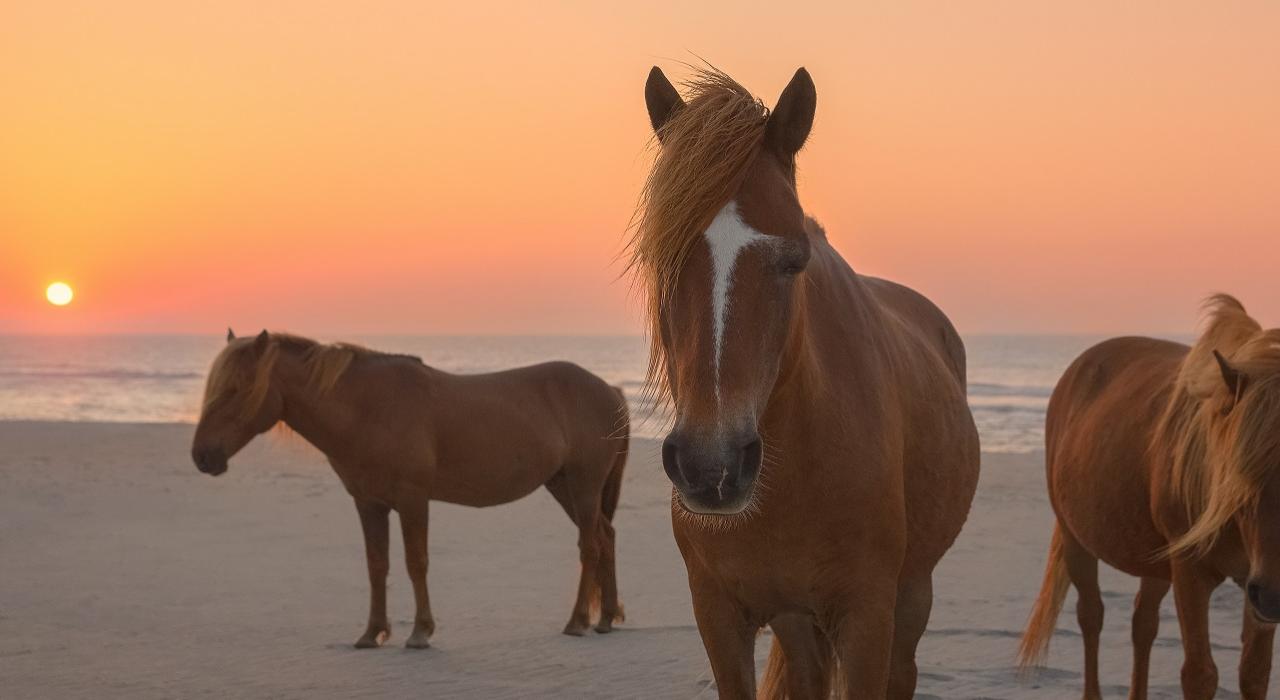An Insider’s Guide to Assateague Island
Assateague Island National Seashore has sandy beaches, salt marshes and maritime forests, but its untamed horses are the main draw.
It’s among the few locations in the country where visitors may witness horses living in freedom. Maryland and Virginia share a barrier island located 227 kilometres east of Washington, D.C. You can go to Assateague and make the most of your stay there with the aid of this insider’s guide.
Getting to the Island
The most straightforward method to go to Assateague is by vehicle rental from Washington, D.C. The most direct route is to head east through Maryland over the 7-kilometer Chesapeake Bay Bridge into Delaware, then south back into Maryland. While it’s an easy and scenic drive, you’ll want to use a map or GPS to navigate and check traffic reports.
Meet the Horses
Visitors flock to see the “wild” horses on the beach. The park features two herds, with a fence divided between the Maryland and Virginia borders. While they are called wild, Assateague’s horses are “descendants of domestic animals that have reverted to a wild state,” according to the National Park Service. Here, the horses can be found running into the surf or grazing on hay or beach grass. As with all animals in their natural habitat, do not approach or feed the horses, and give them space.
Assateague hosts its yearly “Pony Swim” on the final Wednesday of July, which attracts the largest crowds of the year. In order to avoid overcrowding, which may wipe out the herds and other wildlife and plants on the island, the Virginia horse herd is collected up and swims between the tides, when there is no current, from Assateague Island to nearby Chincoteague Island. The local volunteer fire company receives the earnings from the auction of the horses, which are sold to new owners. Securing a berth on a charter boat will allow you to witness this ritual at its best.
While horses and people can mingle on Assateague Island, it’s important to give the animals space.
Outdoor Adventures
Assateague also offers paved bike paths, canoe and kayak launching areas, 19 kilometers of beach driving area (a permit is required), surf fishing and swimming. For biking, a paved path connects Chincoteague and Assateague, with four main trails that wind through woodlands, a swan cove and a marsh, ranging from 0.8 to 5.2 kilometers. Canoes can be rented from the Maryland Coastal Bays Program.
Where to Stay
Camping is one of the most popular ways to stay on Assateague, with beachfront accommodations costing US$30 a night. Reservations are required March 15 through November 15 and can be made up to six months in advance. No surprise: Camping spots go quickly, so book as soon as possible.
Ocean City, Maryland, a seaside resort town located 16 kilometres north of Assateague, offers a variety of hotels along the shore, including the Hilton Ocean City Oceanfront Suites, as well as vacation rentals, for those seeking less rustic accommodations.
If camping isn’t your style, nearby Ocean City offers a variety of lodging, food and entertainment options.
What to Eat
Blue crabs are famous in Maryland, especially in the summer when they shed their shells and become fully edible. Marylanders usually steam and season crabs using the beloved Old Bay Seasoning from the area, and pair them with coleslaw, French fries, and corn on the cob. Outside the park’s campgrounds, Assateague and Ocean City are home to a plethora of specialty crab shacks, including the well-known Assateague Crab House.




